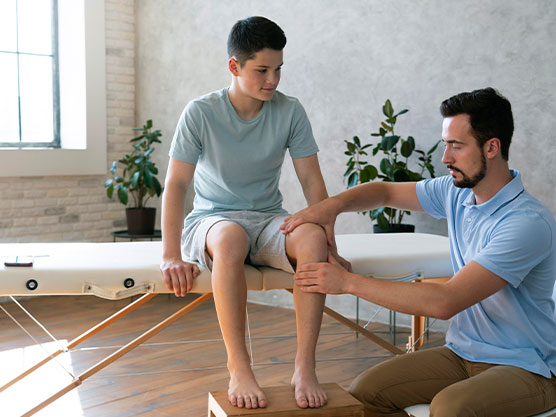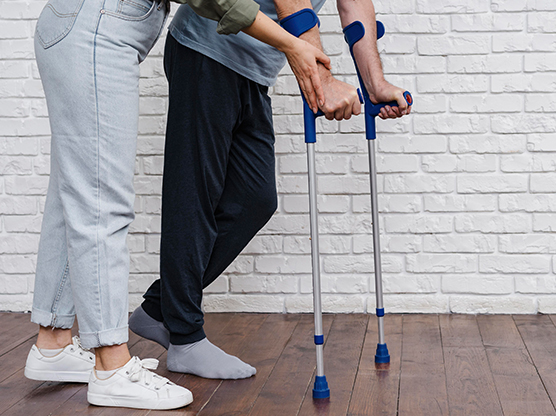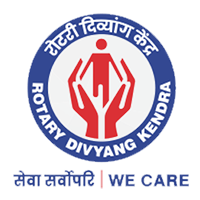Physiotherapy
State of the Art Physiotherapy Centre at RDK to help Rehabilitation with more than 12,000 physiotherapy sessions by a dedicated team of Doctors and staff, at a cost of about Rs.20 Lakhs per annum.

Role Of Physical Therapy In Amputed Patients
Limb amputation is a surgical procedure performed to remove limb that has been damaged due to trauma, disease or congenital defect. Amputation is possible in any age. Physical therapy help people with amputation prepare for and recover after surgery. making them self sufficient.
There are a wide range of importance of physical therapy in the process of amputation,
out of which the stand out ones are.
- Prevention of contractures.
- Compression to address swelling
- Pain management.
- Functional recovery
- Increasing independent function.
- Learning prosthetic use and care.

Rehabilitation has two phases in amputed patients. As mentioned above, the patient undergoes rehab sessions prior to the surgery (Phase I) and immediately after surgery till complete recovery(Phase II)
Phase I is for a short duration while phase II can last for a year. In the former the patient is trained to strengthen and balance the core muscles, the intact limb and other joints. The first few days post surgery rehab includes.
- Gentle stretching and range of motion exercises.
- Learning to roll in bed, sit on the side of the bed, and move safely to chair.
- Learning how to position the limb to prevent contractures.
- Learn to move about in a wheel chair, stand and walk with assistive device like a walker.
Prosthetic training is a process that can last upto a year. Physical therapy will help the patient learn to stand, balance and walk with the prosthetic limb. Regular rehab sessions is advised to achieve the fullest potential to perform the activities similar to the days while the limb was intact. Physical therapy thus adds life to the days post amputation with the support of prosthesis.


